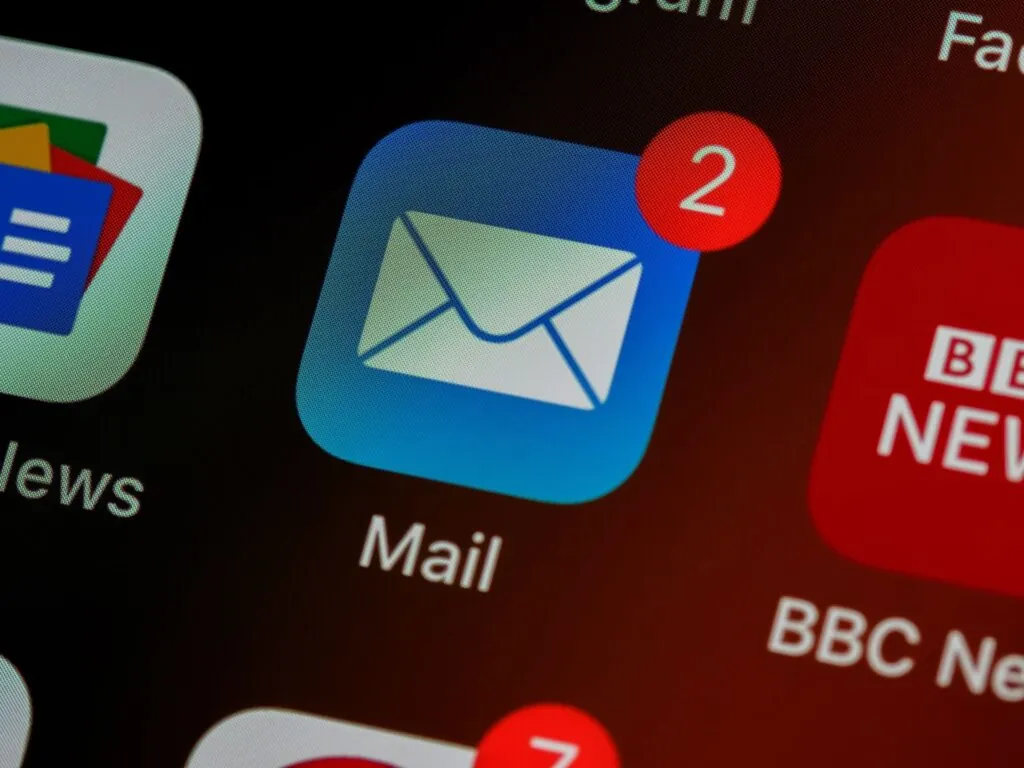Mastering the Cold Email Follow-Up: Secrets to Higher Conversion Rates
Cold emailing has always been a potent tool for businesses looking to expand their presence. By consistently reaching out to potential clients, you increase your chances of making an impression and boosting conversions.
However…
Like you, many businesses find themselves wasting countless hours and money on cold email outreach, only to see their attempts fail, leading to dishearteningly low conversion rates.
The solution?
You need to up your cold follow-up game to engage more decision-makers and give your brand the recognition it deserves.
In today’s guide, you’ll learn everything you need to know about cold email follow-ups and how they should be done. We’ll answer the most crucial questions about the topic, from the length and frequency of your emails to crafting the perfect email follow-up.
Let’s get started!
Why is Following Up Crucial in Cold Emailing?
Following up has a lot of advantages to offer to all sorts of businesses and in all industries. Here are three reasons why this practice is crucial for any effective cold outreach campaign:
Increase Response Rates
Not every prospect has the time to respond to your initial cold emails. Even if you’re only reaching out to targeted leads. By following up, you’ll increase your chances of catching the prospect’s attention at the right moment, thereby boosting the response rate.
Additionally, consistent follow-ups that don’t come off as spammy convey persistence, which can differentiate you from competitors.
Show Genuine Interest
A single email can easily be disregarded as automated or spam. But, when you follow up, you send a clear message to the recipient that you have a genuine interest in their business needs.
Following up multiple times emphasizes your dedication to providing solutions and building a fruitful partnership.
Build Trust Over Time
Cold emailing is often perceived as impersonal. But with systematic and thoughtful follow-ups, you can build rapport and trust with the prospect. A recipient opening your email for the first time might not decide to respond because they don’t know you. However, you’ll be much more likely to hear back from them as they familiarize themselves with your brand.
Each touchpoint serves as an opportunity to display your company’s reliability, knowledge, and commitment to your prospective buyers’ success.

How Often Should You Follow Up?
Your follow-up frequency depends on your industry, the size of the target company, and the specific prospects you’re aiming for. If you’re targeting big B2B corporations, it’s reasonable to space out your follow-ups as much as possible. This is because decision-makers at these companies tend to be busy and often juggle multiple priorities.
After the initial email, it’s best to send your next follow-up message in 2 to 3 days. This gives the lead enough time to catch up on their emails and get back to you if they’re interested.
For subsequent follow-ups, you should be careful and space out any additional follow-ups by 4 to 7 days — especially if the prospect is yet to show any interest. This ensures that you’re not coming off as too pushy.
As for your break-up email, you can send a polite closing message after 2 weeks of not hearing back. With this email, you’ll simply convey that you’re moving on but are always available if they wish to reconnect in the future.
The truth is:
The line between being persistent and being salesy is a fine one. Knowing when to stop is as crucial as knowing when to follow up. If you’ve sent four or five follow-ups without any response, it’s probably time to shift your focus to more promising leads.
When Does It Make Sense to Follow Up With a Prospect?
We’ll now delve into the specific scenarios where following up with a prospect can significantly elevate your chances of securing a positive response.
1. After a Discovery Call
A discovery call can provide valuable insights into a prospect’s needs and challenges. A follow-up email after such a conversation is vital for keeping the momentum going. Sending an email follow-up reinforces your dedication to solving their problems and reminds them of the solutions you discussed.
2. No Response After Your Initial Email
Sending a cold email without receiving an immediate reply is quite the norm. Target buyers could often be busy, might have missed the email, or are still considering your proposition. A follow-up after a few days can serve as a gentle reminder, ensuring your pitch gets the attention it deserves.
3. Post-event or Webinar
After attending an event or webinar, attendees often return to their routines, and your interaction might be placed on the back burner. Thus, a follow-up email is an excellent way to reignite their interest. You use the opportunity to offer a recap of the event and emphasize key takeaways relevant to their business.
4. If a Prospect Goes Dark After Initial Interest
Sometimes, a lead might show initial enthusiasm but later become unresponsive. It’s possible they’re evaluating options or perhaps they got sidetracked by other priorities. How do you spike their interest again? By sending an engaging follow-up email addressing any concerns and emphasizing your value proposition.
5. After They Engage With Your Brand Online
Engagement on your website or social media channels indicates a prospect’s interest. If they’ve downloaded a case study, commented on a blog post, or sent you a message, a personalized follow-up can transition this passive interest into an active conversation. This is a highly efficient way to drive warm leads further down the sales funnel.
6. When There’s a Change in the Prospect’s Company
Company structures shift in many ways. There could be mergers, new leadership, or strategy pivots that can impact a prospect’s priorities. As soon as you’re aware of these changes, send a timely follow-up to showcase your proactive approach. For instance, you could offer tailored solutions to meet their new circumstances.
7. Feedback on Demo or Trial
Once a prospect has experienced a demo or trial of your product or service, they’ll have firsthand insights. Yet, you shouldn’t expect them to come back to you with their opinions. Following up to gather feedback provides a dual opportunity: addressing any reservations they might have and fine-tuning your offering based on their responses.
When is the Best Time to Send a Follow-up?
The answer to this question depends mainly on your target audience and their behavior. But as a rule of thumb, here are the best times to send your emails:
- Morning hours (between 9 a.m. to 11 a.m.) tend to yield better open rates and reply rates for most industries
- For other industries or specific roles, evening times (between 07 p.m. and 09 p.m.) might work better, especially if you’re targeting top-level executives who might check their emails after regular business hours.
Emails sent on Tuesdays and Wednesdays generally experience higher open rates than those sent on Mondays. This is because prospect inboxes are typically crowded on Mondays and Fridays. However, this doesn’t mean you should never send cold email follow-ups on a Monday.
Keep in mind:
When targeting a global audience, you should always consider time zones. It might make sense to segment your email list based on location to ensure that your emails hit the recipient’s inbox at the optimal local time.
How Long Should a Follow-Up Email Be?
Your email follow ups should always be shorter than your initial email. Depending on what you want to communicate, a follow up email length could range from 20 to 70 words at most. You could use that to quickly remind the prospect of your previous email, explain why you’re reaching out, and add a brief call to action.
Remember:
Every word in your follow up email should serve a clear purpose. If a sentence or paragraph doesn’t help drive your message home, consider cutting it.

How to Write the Perfect Email Follow-Up
Writing the perfect email outreach follow-up is crucial for maintaining communication. By crafting the right message, you can notably enhance your response rates and engage more prospects.
Here are five essential tips to help you write a follow up email that drives results:
Be Direct and Concise
Long-winded introductions and follow-ups can deter quality leads. Decision-makers are often pressed for time. Hence, a shorter, well-constructed message typically has more impact and a better chance of eliciting a response.
Follow Up In the Same Email Thread
There are a lot of automated cold emailing tools that can help you follow up within the same email thread. This approach is essential as it lets prospects quickly remember the context of the conversation. By doing so, they don’t need to sift through earlier interactions, making their experience smoother and raising the chances of them engaging.
Provide Additional Value
With each follow-up email, aim to offer something novel and valuable. Whether it’s a relevant article, a case study, or a fresh insight, strive to consistently contribute value to keep the conversation beneficial for the prospect.
Diversify Your Follow-Up Timing
Don’t stick to a rigid schedule or a specific time of the day. Mix up your follow-up timing, as this increases the chances of catching your prospect at a good moment. This is how you ensure that your emails aren’t overlooked in a busy inbox.
Include a Clear Call to Action
This means always ending your email with a specific request or question. Whether you want to get feedback, schedule a meeting, or offer help, be clear about it. This gives your prospect a clear direction on how to respond and what to do next.
Keep Track of Your Follow-Ups
How do you know your follow-up efforts are efficient if you don’t track them? Putting in place a system to monitor your follow-ups is key to keeping your approach more organized and professional. This ensures you don’t overwhelm leads with repetitive messages or irrelevant offers.
Personalize Your Replies
The main purpose of cold email follow-up is for you to reflect a genuine interest in helping the prospect. However, relying on generic follow-up messages can undermine this objective. Show your prospect you’ve done your homework by mentioning past interactions, touching on recent company milestones, or highlighting mutual acquaintances.
Conclusion
If you’re serious about cold email outreach, following up shouldn’t be just a “nice-to-have” but an integral part of any successful B2B email outreach strategy. Of course, the difference between an average campaign and a great one often comes down to the quality and timing of the follow-ups. By embracing the best practices shared in this guide, you can fine-tune your cold email follow-up strategy and significantly boost your conversion rates.


